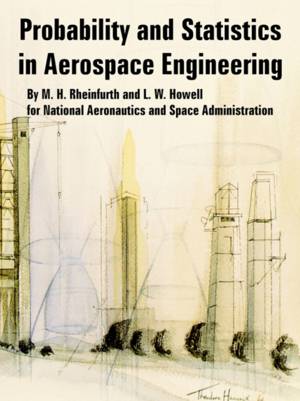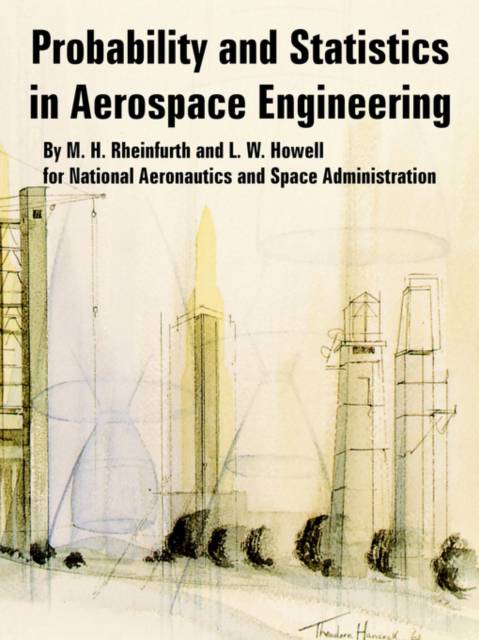
- Retrait gratuit dans votre magasin Club
- 7.000.000 titres dans notre catalogue
- Payer en toute sécurité
- Toujours un magasin près de chez vous
- Retrait gratuit dans votre magasin Club
- 7.000.0000 titres dans notre catalogue
- Payer en toute sécurité
- Toujours un magasin près de chez vous
Probability and Statistics in Aerospace Engineering
M H Rheinfurth, L W Howell, N a S a
Livre broché | Anglais
40,45 €
+ 80 points
Description
Statistics is the science of the collection, organization, analysis, and interpretation of numerical data, especially the analysis of population characteristics by inference from sampling. In engineering work this includes such different tasks as predicting the reliability of space launch vehicles and subsystems, lifetime analysis of spacecraft system components, failure analysis, and tolerance limits. A common engineering definition of statistics states that statistics is the science of guiding decisions in the face of uncertainties. An earlier definition was statistics is the science of making decisions in the face of uncertainties, but the verb making has been moderated to guiding. Statistical procedures can vary from the drawing and assessment of a few simple graphs to carrying out very complex mathematical analysis with the use of computers; in any application, however, there is the essential underlying influence of "chance." Whether some natural phenomenon is being observed or a scientific experiment is being carried out, the analysis will be statistical if it is impossible to predict the data exactly with certainty. The theory of probability had, strangely enough, a clearly recognizable and rather definitive start. It occurred in France in 1654. The French nobleman Chevalier de Mere had reasoned falsely that the probability of getting at least one six with 4 throws of a single die was the same as the probability of getting at least one "double six" in 24 throws of a pair of dice. This misconception gave rise to a correspondence between the French mathematician Blaise Pascal (1623-1662) and his mathematician friend Pierre Fermat (1601-1665) to whom he wrote: "Monsieur le Chevalier de Mere is very bright, but he is not a mathematician, and that, as you know, is a very serious defect." CONTENTS: Introduction - Preliminary Remarks - Statistical Potpourri - Measurement Scales - Probability and Set Theory Probability Definitions of Probability - Combinatorial Analysis (Counting Techniques) - Basic Laws of Probability - Probability Distributions - Distribution (Population) Parameters - Chebyshev's Theorem - Special Discrete Probability Functions - Special Continuous Distributions - Joint Distribution Functions - Mathematical Expectation - Functions of Random Variables - Central Limit Theorem (Normal Convergence Theorem) - Simulation (Monte Carlo Methods) Statistic Estimation Theory - Point Estimation - Sampling Distributions - Interval Estimation - Tolerance Limits - Hypothesis/Significance Testing - Curve Fitting, Regression, and Correlation - Goodness-of-Fit Tests - Quality Control - Reliability and Life Testing - Error Propagation Law Bibliography
Spécifications
Parties prenantes
- Auteur(s) :
- Editeur:
Contenu
- Nombre de pages :
- 136
- Langue:
- Anglais
Caractéristiques
- EAN:
- 9781410225887
- Date de parution :
- 09-08-06
- Format:
- Livre broché
- Format numérique:
- Trade paperback (VS)
- Dimensions :
- 210 mm x 279 mm
- Poids :
- 322 g

Les avis
Nous publions uniquement les avis qui respectent les conditions requises. Consultez nos conditions pour les avis.






